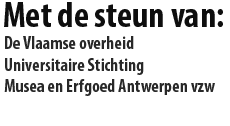D. CALLEWAERT
De subjectieve en collectieve tijdservaring vanuit een volkskundig perspectief
The individual and collective experience of time: an ethnological analysis
Personifications, attributes, images and expressions render the concept time less abstract. Indications of time are not always mathematical data because in a special context they too often have an emotional value (e.g. nine eleven, 31st of october vs. halloween, etc). Discussions about setting the doek to summer-time are ridiculous in comparison to interfering with the calendar. The julian and gregorian reforms were pragmatic. The `revolutionary’ reforms were ideological and brought forth collective protest because people lost their points of reference and reacted accordingly. In the western hemisphere the abbreviatons AD, AH and UT refer to different eras and this aspect of time deals with identity.
Life is marked by ups and downs. That is the reason why it is important to act cautiously, to know beforehand what is to be done and avoided at a certain moment. Some people believe that the way something happens (especially at the startingpoint) sets an ominous precedent.
It is remarkable that there are so many contradictory points of view regarding (un)lucky moments. This paper is not meant to be an inventory, but rather as an appetizer.
.
E. DECRAENE
‘ghelyck eene man met eeren toestaet‘ De constructie van de “goede” en “falende” echtgenoot voor het Brusselse en Mechelse geestelijke hof in de eerste helft van de 17e eeuw: ezen casestudy
“Like a man with honour permits”. The construction of the Bood’ and the bad’ husband before the ecclesiastical court of Brussels and Mechelen during the first half of the seventeenth century: A case study
This study aims at analysing the way in which the idea of male dominance within a marital bond was constructed and negotiated before the ecclesiastical courts of Brussels and Mechelen during the first half of the seventeenth century. Via a dis-course analysis of 11 cases on marital conflicts, I aim to demonstrate that husbands had to come up to a fluid corpus of expectations. Patriarchal dominance was not absolute and the boundaries between an acceptable practice of dominance within husband/wife relationships was constantly negotiated and contested by neighbours, friends, families and priests. Men who violated the acceptable social practice of patriarchal principles inside their households affected their manly status in other social, often public, circuits and vice versa. This micro-study will serve as a first step towards a better understanding of the actual social practice of early modern patriarchal power.
.
H. GEYBELS
Sint-Damiaan in de religieuze volkscultuur: held of heilige?
Father Damien: Saint or Hero?
Father Damien is very popular, though almost unknown in popular religious culture, contrary to e.g. Saint Anthony, Saint Rita, Mary … Not only in Flanders, but also in Hawaii, a popular devotion has never developed, notwithstanding the enormous amount of relics which has been spread. Nowadays, people light candles, offer some money and touch his grave, but that’s about it. One of the explanations is that Father Damien is foremost a `social hero’ and it is difficult to identify him with a hero. What he has done, is hard to conceive, almost super-human. He is an example of courage, commitment, solidarity and so on. Another reason is that the Fathers of the Holy Hearts never encouraged popular devotions for the first saint of their congregation. The Fathers presented him as a christian example of love for the neighbour, rather than a devotional idol. There has never been an explicit merchandising, so to speak. However, some things changed in the pilgrimage place of Scherpenheuvel. In May 2010, a big, bronze statue of the saint was revealed, and suddenly people started to touch the one foot of the saint. Till now, that is the only expression of a popular cult, which spontaneously came into origin.
.

